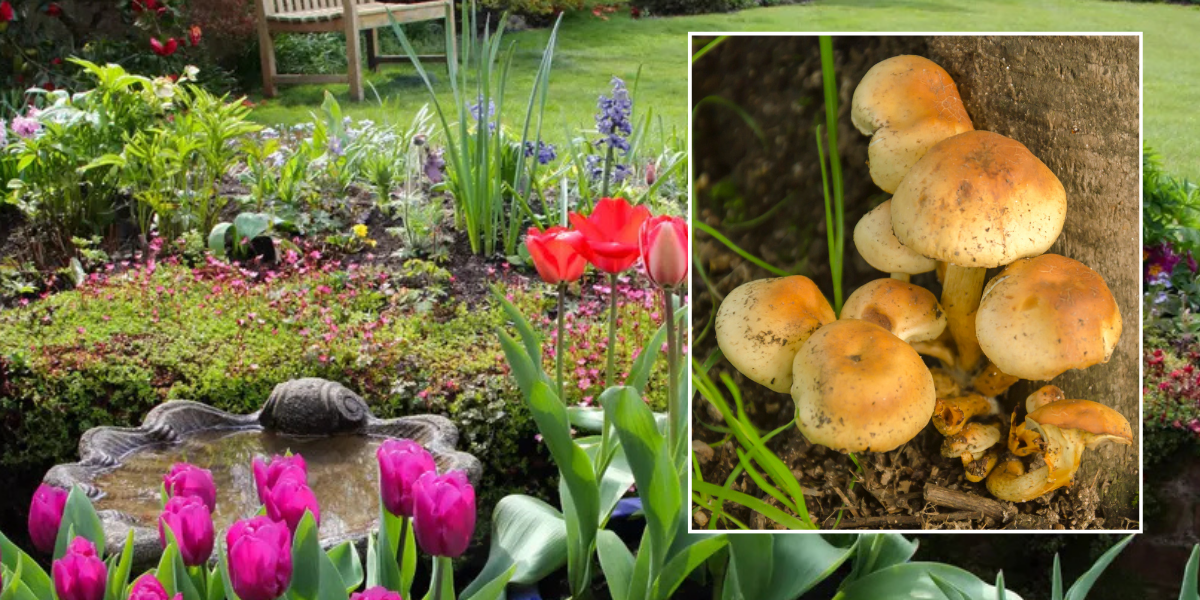Homeowners are warned about the dangers of honey fungus, a parasitic infection that can devastate trees and shrubs in domestic gardens.
The fungus, scientifically known as Armillaria, attacks and kills plant roots, with gardening experts noting that it poses a particular threat in maintained gardens.
While honey fungus typically causes little damage in wild settings due to competing fungi keeping it in check, it can thrive and become problematic in garden environments where these natural controls are absent.
The fungal infection primarily affects root systems underground, making early detection crucial for garden protection.
Experts share how to combat the fungus
GETTY
Experts have highlighted key warning signs that can indicate a honey fungus infection in garden trees.
These visible symptoms include pale foliage, cracked bark, and the appearance of honey-coloured mushroom clusters.
Founder of GardeningExpress.co.uk Chris Bonnett said: “Honey fungus can be a real problem if it starts attacking your trees and if you spot any signs of it you should try to remove the affected plant as quickly as possible.
“Honey fungus can spread really rapidly so this is really important in making sure it doesn’t spread to any other parts of your garden.”
Prevention of honey fungus relies heavily on proper garden management, with soil conditions being particularly important.
The experts warned “honey fungus loves a waterlogged environment,” so gardeners should ensure good soil drainage and avoid overwatering.
Creating a forest floor environment around trees can provide natural protection against the fungus.
Surprisingly, well-maintained and cleaner gardens may be more susceptible to honey fungus spread than those mimicking natural forest conditions.
This can be achieved by allowing fallen leaves to remain and encouraging beneficial fungi through compost addition, creating a more resistant ecosystem.
If honey fungus is discovered, immediate action is crucial
PEXELS
Proper watering technique is key to combat the issue, with deep watering recommended to promote strong root systems rather than frequent surface watering.
Soil drainage can be improved by incorporating organic matter such as compost, bark and mulch while aerating the soil helps reduce excess moisture.
If honey fungus is discovered, immediate action is crucial, the expert stated. The affected tree must be completely removed, including as much of the trunk and root system as possible, and disposed of in a landfill.
Areas previously affected by honey fungus should not be replanted, as the fungus can persist in soil for years.
